An ex-voto is some type of offering presented to a saint or to God, signifying devotion following a vow or gratitude for divine assistance, generally in a crisis. Ex voto [Latin] is short for ex voto suscepto, meaning “from the vow made.” This tradition emphasizes a personal relationship between God and believers, which is central to Christianity, epitomized in the concept of God as a loving and caring father.
Ex-votos can take various forms, including paintings, metal body part replicas (to signify healing of a certain illness or disability), or modern artifacts such as photographs and newspaper clippings.

The Maltese Islands, in particular, exemplify a rich tradition of ex-votos, which serve not only as personal tokens of thanks but also as testimonies of divine intervention for future generations.
The diversity of ex-votos in Maltese churches is noteworthy, with offerings including baby clothes, crutches, medical items, handcuffs, pieces of sails and ropes, monetary gifts, and the list goes on. Entire churches built as ex-votos stand as monumental examples of vows fulfilled. The traditional ex-voto painting typically depicts the scene of an event, the icon of the Madonna or saint involved, and an inscription often reading “VFGA” (Votum Fecit Gratiam Accepit), meaning “I made the vow and I received the grace.”
Maritime ex-votos are particularly illustrative, portraying dramatic sea calamities and miraculous survivals, something naturally commonplace on an island. While spiritually significant, votive paintings also hold immense historical value, providing unique insights into past maritime practices, domestic life, and landscapes of the Maltese Islands.
Marian ex-votos, dedicated to the Blessed Virgin Mary, significantly outnumber those offered to other saints. Malta boasts 359 churches, over 200 of which are dedicated to the Virgin Mary and are known for miraculous graces attributed to her intercession. The profusion of ex-votos in these sanctuaries, which range from handwritten notes to baby clothes and even a motorcycle helmet, evidences the profound trust the Maltese people repose in the Mother of God, particularly during all kinds of crises.

These offerings are both expressions of gratitude and requests for divine intervention. While some ex-voto paintings may appear rudimentary, they remain potent symbols of Marian devotion in Malta. Notable examples include works by renowned artists such as Mattia Preti and Anton Inglott, who created paintings for significant churches as acts of thanksgiving.
A genre, with specialized artists
Additionally, many ex-voto paintings are crafted by Madonnari, artists specializing in this genre, who skillfully captured the miraculous events and the donors’ experiences. Despite lacking the technique and fame of Preti or Inglott, these artists excelled in conveying the essence of the donors’ gratitude and devotion.
Malta and Gozo are replete with sanctuaries housing extensive collections of ex-votos, particularly those linked to the graces of Our Lady. Notable sites include the Madonna Ta’ Pinu National Shrine in Gozo, Our Lady of Mercy in Qrendi, Our Lady of Graces sanctuary in Żabbar, and the Malta National Shrine in Mellieħa. These sanctuaries, adorned with a plethora of ex-votos, attract pilgrims and visitors alike, offering a tangible connection to the island’s rich heritage of faith and devotion. In some cases, the churches themselves stand as grand ex-votos, embodying the fulfillment of vows and the deep spiritual history of the Maltese archipelago.
In short, the tradition of ex votos in the Maltese Islands is a profound expression of faith, gratitude, and historical continuity. These offerings encapsulate personal and communal narratives of divine intervention, underscoring the enduring bond between the Maltese people and their religious beliefs. Through these tangible tokens, the legacy of faith and devotion is preserved and celebrated across generations.
Following are a few examples of sites and artifacts connected to ex-voto traditions, which reflect the Islands’ deep devotional history.
Votive Paintings and Other Artefacts
Mellieħa National Marian Shrine
The Mellieħa National Marian Shrine, the oldest Marian shrine in Malta, is situated on the site of a cave that is believed to have been linked to the founding of Christianity on the island. According to tradition, the cave became a Christian site following the shipwreck of St. Paul in AD 60.
Additionally, a group of Catholic bishops is said to have consecrated the grotto as a church in 409. The current structure, built between the 16th and 18th centuries, includes part of the natural cave and has welcomed various dignitaries over the centuries, including St. Pope John Paul II in 1990.

According to legend, the Evangelist Luke painted a fresco here during his time in Malta. However, the present icon of the Theotokos Hodegetria (She who shows the way to the Savior), dates to the 12th/13th century and is of Siculo-Byzantine origin. The shrine has long been a pilgrimage site, where believers have left ex-votos in gratitude for graces received through the intercession of Our Lady. The offerings include paintings by artists such as Stefano Erardi and the Madonnari, as well as prosthetics, baby clothes, and maritime rigging.
During the Great Siege of Malta, Don García de Toledo is said to have visited the shrine. In 1614, the church was ransacked during an Ottoman attack, damaging the main fresco and statues. Grand Master Alof de Wignacourt is said to have visited the shrine with regularity following the attack, thereby reinforcing the site’s veneration.
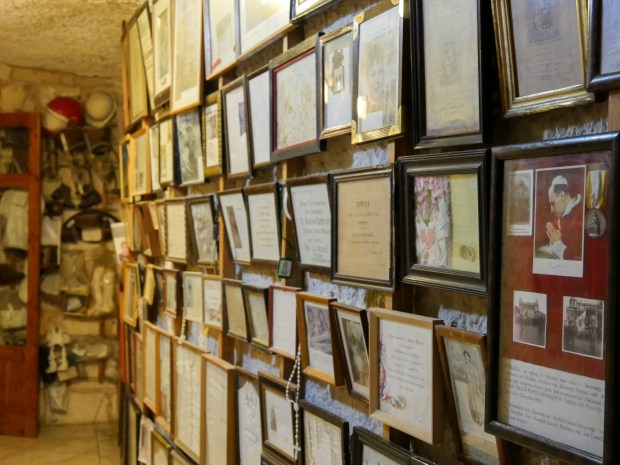
National pilgrimages were undertaken to the shrine during the cholera epidemic of 1888 and again in 1949. The shrine complex encompasses an underground grotto chapel, hewn from limestone by a Sicilian devotee in 1644, featuring a white statue of Our Lady holding the Holy Infant. The grotto has been the site of numerous miraculous events, particularly notable in 1887, 1888, and 1948, when witnesses claimed to observe the statue moving its right hand to make the Sign of the Cross. These events are meticulously documented in the shrine’s archives.
Madonna Ta’ Pinu National Marian Shrine, Gozo
The origins of the Ta’ Pinu shrine are ancient, centered around a small chapel initially known as Ta’ Ġentile and later as Ta’ Pinu, after Pinu Gauci, who became its procurator in 1598. The chapel gained fame in 1883 when Karmni Grima from Għarb heard a mysterious voice urging her to pray at the chapel. This event, coupled with subsequent miraculous healings, transformed the modest chapel into a major Marian shrine. Franġisk Portelli, who also experienced a miraculous event, witnessed his mother’s recovery after praying to the Blessed Virgin of Ta’ Pinu.
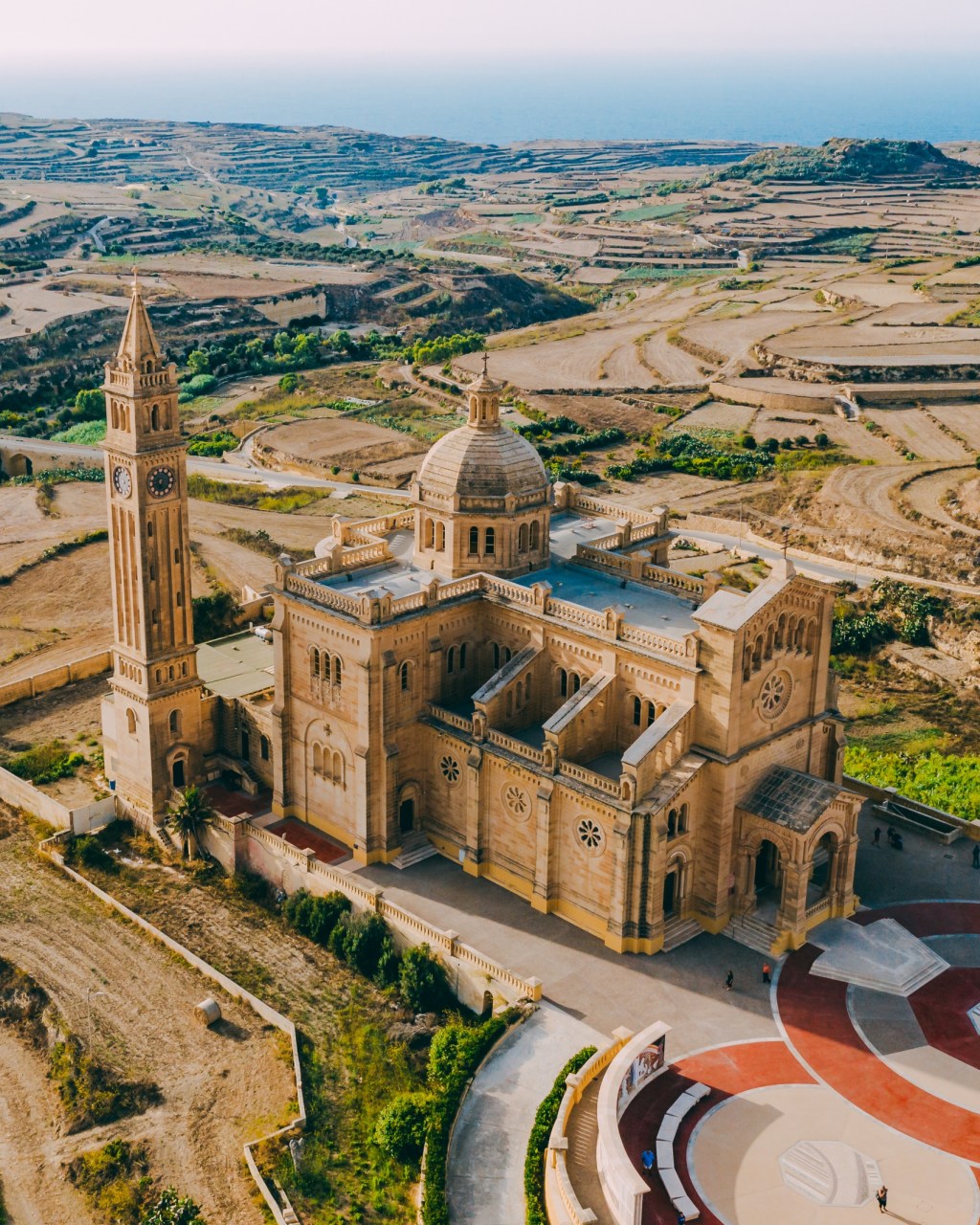
Ta’ Pinu is renowned as “The Church of Miracles,” with its basilica adorned with numerous ex votos, including paintings, texts, and modeled body parts symbolizing miraculous healings. One of the earliest votive paintings dates back to May 1886. The shrine’s significance grew after Francis Portelli and his brothers made a vow during their mother’s illness, which led to her miraculous recovery. Bishop Nicholas Cauchi’s writings highlight the many heavenly favors attributed to Our Lady of Ta’ Pinu, reinforcing the shrine’s status as a beacon of faith and miracles.

The Sanctuary and Museum of Our Lady of Graces, Żabbar
The devotion to Our Lady of Graces in Żabbar has a long history, with the parish established in 1616 and the current church built between 1641 and 1718. The museum of the sanctuary displays artifacts that trace the history of the locality and includes an early 16th-century fresco of Our Lady of Graces, discovered in 1954, which is the oldest known image of her in Żabbar. The museum houses a significant collection of ex voto paintings, some of which were donated by the Fleet of the Order of St. John the Baptist – The Order of Malta.
The paintings, which date as far back as 1631, reflect a profound religious sentiment and gratitude for the graces received through Our Lady’s intercession. So far, no votive paintings older than those in Naples at “Madonna dell’ Arco” (16th century) have been identified. The oldest Maltese votive painting goes back to 1631 -- part of the collection of the Żabbar museum. Malta may have older paintings, but further research is necessary. Among the museum’s notable exhibits is a votive painting by Mattia Preti and numerous other paintings by unknown Madonnari, which illustrate maritime scenes and personal miracles. The most recent maritime ex voto, donated in 2012 by Carmen Axiaq, recounts the miraculous safe return of her husband, Mario, after he was lost at sea. This contemporary ex voto continues the tradition of expressing gratitude for divine intervention and the power of prayer.
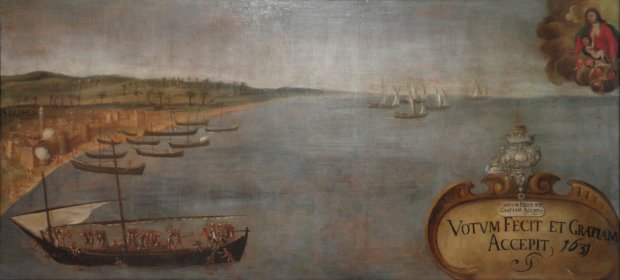
Madonna Tal-Ħerba, Birkirkara
The Madonna Tal-Ħerba sanctuary, situated in Birkirkara, was initially constructed on the site of a former chapel amidst rocks and ruins. Hence, its name, which translates to “Madonna of the Ruins.” However, the etymology of the term “Tal-Ħerba” remains uncertain. It may derive from the meaning “ruins” or “Ħarba,” which means “escape.” This latter interpretation suggests that the term may have originated from an Ottoman flight. While the original date of the sanctuary’s construction is unknown, it was already a notable Marian shrine by 1575. Over the centuries, it has undergone various enlargements and modifications.
The sanctuary’s titular painting depicts the Blessed Virgin Mary holding Child Jesus, with her right hand welcoming souls from purgatory. This painting was crowned in 1910 and is a facsimile of an older image that included St. Joseph instead of the Guardian Angel, now housed in a side chapel.

The Madonna Tal-Ħerba sanctuary is renowned for its numerous ex-votos, especially paintings related to maritime incidents, which adorn the church’s walls. These paintings, along with naval rigging ropes, crutches, silver figurines, and military medals, attest to the enduring faith in the Madonna’s intercessory power. The church’s collection includes offerings from soldiers and sailors, as well as paintings expressing gratitude for healings from illnesses and diseases. The variety and quantity of ex votos, both ancient and modern, underscore the sanctuary’s significance as a place of devotion and miraculous intervention.
Madonna tal-Ħniena (Our Lady of Mercy), Qrendi
The church of Our Lady of Mercy in Qrendi, located in southern Malta, stands on the site of a 13th-century chapel. The present church was constructed in the 1650s. Recent restoration efforts by the Malta Restoration Directorate uncovered remnants of the original chapel. The older church is mentioned in a 1575 pastoral visit report by Bishop Duzina and an 1841 report by the archpriest of Senglea. The name “Mercy” may have originated from a miraculous apparition in Savona in 1536 or from “della Mercede,” meaning “Redemption,” referring to the liberation of slaves.
This church has been a significant Marian shrine for centuries, second in popularity only to the Mellieħa sanctuary. During the leprosy epidemic of 1676, the chapel gained particular prominence. Bishop Molina in 1679 referred to Qrendi’s Madonna as “Our Lady of Graces,” acknowledging the numerous graces granted. Pope Innocent XII in 1695 granted indulgences to visitors of the chapel, drawing even more pilgrims. The influx of visitors necessitated the provision of fresh drinking water near the church’s main portico.
The devotion to Our Lady of Mercy is evidenced by the many ex voto paintings donated to the chapel. These votive offerings include depictions of maritime incidents, accidents, and medical recoveries. Although restoration works have temporarily relocated these paintings to the Qrendi parish, plans are in place to return them to the church. The church also contains a silver heart, a golden necklace, and a portion of a sword, which were offered as ex votos. These reflect the diverse nature of the offerings made in gratitude for graces received.
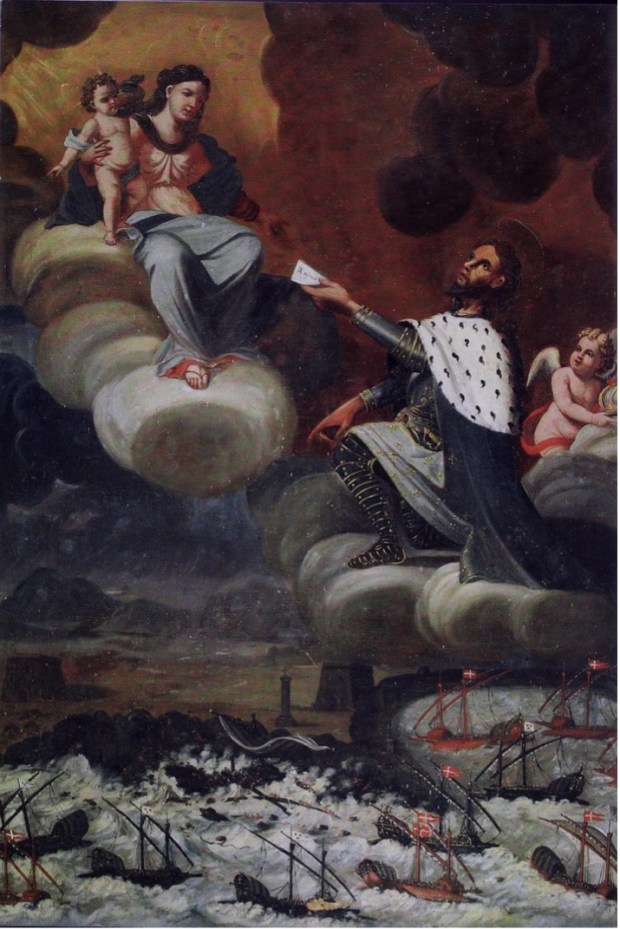
Madonna Tal-Ħlas
The small church of Santa Marija Tal-Ħlas, located in Qormi, is dedicated to Our Lady of the Assumption, the revered patroness of the Maltese Islands. Historically, there were ten chapels dedicated to the Assumption in Qormi, though only five remain today. The term “ħlas” in Maltese has multiple meanings, including “childbirth” and “liberation,” reflecting the dual role of the church in devotion. One tradition suggests that the name originates from the defeat of Saracen pirates by the Aragonese, symbolizing the liberation from slavery.
The chapel has been a center of devotion for expectant mothers, who invoke the Blessed Virgin Mary for assistance during childbirth. This devotion extends to the presentation of newborns to Mary, emphasizing her role in divine maternity. The church’s geographical position made it a resting place for travelers between Vittoriosa and Mdina, adding to its historical significance. The sacristy of the Santa Marija Tal-Ħlas sanctuary is filled with ex-votos, including ancient and recent offerings, showcasing the enduring trust of the Maltese people in the Blessed Virgin’s intercessory power.

These offerings include paintings, baby clothes, and other items symbolizing gratitude for safe childbirth, healing from illness, and survival from accidents at sea. Notably, some of the votive paintings bear the signatures of renowned artists, highlighting the artistic and spiritual value of these testimonies.
Our Lady of Mount Carmel, Valletta
The Carmelites, who arrived in Malta from Sicily in 1418, initially settled in a church in Mdina and subsequently expanded their presence across the island. The first Carmelite church in Valletta, constructed in 1586 by architect Gerolamo Cassar, became the principal shrine of Our Lady of Mount Carmel. The altarpiece of the Valletta Church, which is believed to have been brought from Sicily, depicts Our Lady of Mount Carmel giving the scapular to St. Simon Stock and comforting the Holy Souls in Purgatory, with St. Agatha also featured. This painting was crowned by the Vatican Chapter in 1881, the first of its kind in Malta, underscoring its reputation for miracles and the deep devotion it inspired.
During the Second World War, the church was extensively damaged by aerial bombardment and subsequently rebuilt into a monumental structure that now dominates the Valletta skyline. Adjacent to the main church is an oratory belonging to the Confraternity of Our Lady of Mount Carmel, which houses the first statue of Our Lady of Mount Carmel in Malta. This historic statue was recently attributed to the 17th-century sculptor Pietro Paolo Troisi. Additionally, the Valletta priory houses a smaller painting of Our Lady of Mount Carmel, known as Our Lady of the Sick, which is taken to the homes of the ill for prayers and blessings.

The Valletta shrine is adorned with numerous ex-votos, including silver offerings, that testify to the countless graces and miracles attributed to Our Lady of Mount Carmel. The ex votos, which are displayed in both the oratory and the main church, reflect the unwavering faith and gratitude of the Maltese people for the Virgin Mary’s intercessory power and protection.
Churches as Votive Offerings
The Immaculate Conception of Sarria
The Church of the Immaculate Conception of Sarria, situated in Floriana, Malta, has a compelling historical foundation, deeply rooted in the island’s past. The original church, commissioned by Fra Martin de Sarria from Navarra, Spain, was constructed in 1565. However, the present-day church was constructed in response to a catastrophic plague that devastated Malta in 1675, resulting in the deaths of approximately 6,700 individuals, which constituted approximately a fifth of the island’s population at the time. In their moment of greatest need, Grand Master Nicola Cotoner and the Knights of St. John turned to divine intervention in their prayers. As devotees of the Immaculate Conception, they made a vow to construct a church dedicated to this title should the plague be lifted. Their prayers were answered, as the epidemic began to abate shortly thereafter. In 1677, the Knights commenced construction of the new church to fulfill their pledge, replacing the original modest edifice erected a century prior.

The new church was designed by the renowned Calabrian artist Mattia Preti. This church is notable for being the only one designed by Preti and for displaying numerous examples of his work, including a striking titular painting of the Immaculate Conception triumphing over evil and the plague. This devotion to the Immaculate Conception in Malta predates the official dogma proclaimed in 1854, thereby indicating a long-standing veneration that can be traced back to early Byzantine times.
Madonna taz-Żellieqa
Another noteworthy Marian devotion is observed in the Church of Madonna taz-Żellieqa, which is dedicated to the Assumption of Our Lady and is situated at the edge of Għargħur. The name “Żellieqa” (slippery) is believed to have originated from the poor condition of the road when the church was first constructed in the 16th century. Strong tradition has it that a young woman from the village was cured of a severe disease after an apparition of the Blessed Virgin Mary in 1560. In gratitude, she proceeded to construct a church dedicated to the Assumption of Mary. This event is mentioned in Mgr. Pietro Dusina’s pastoral visit report of 1575, although he did not name the woman or specify the apparition date.
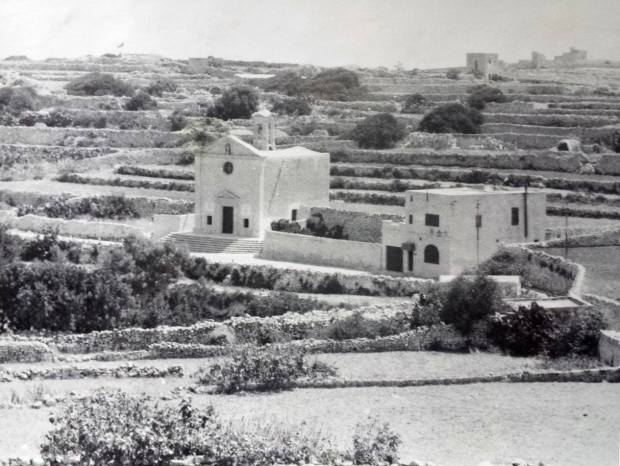
The original church was eventually replaced by a larger structure in 1650 due to the growing devotion of the local population. In 1950, the Dogma of the Assumption was proclaimed, and Archbishop Michael Gonzi permitted the installation of two marble tablets on the church’s façade, commemorating the miraculous event and the devotion it inspired. The inhabitants of Għargħur continue to maintain the church with great reverence, frequently making pledges and presenting their infants there in a special devotion to Our Lady.
Our Lady of Good Hope
The Church of Our Lady of Good Hope, situated in the Valley of Good Hope in the vicinity of Mosta, has its own unique and miraculous origin. In approximately 1750, a young woman, a member of a peasant family engaged in agricultural labor in the vicinity, was pursued by Barbary corsairs. Unable to keep pace with her family due to her lameness, she sought refuge in a cave and petitioned Our Lady for protection, vowing to construct a church should she be spared. In a remarkable turn of events, a spider constructed a web across the cave entrance, leading the corsairs to believe that it was undisturbed and thus not concealing anyone. The pirates departed from the area without any gains, and the young woman proceeded to fulfill her pledge by constructing a church over the cave in 1757. The church has since become a place of pilgrimage for those seeking healing and blessings, as evidenced by the numerous ex votos in the sacristy and cave. The church of Our Lady of Good Hope continues to serve as a symbol of faith and hope, in alignment with the Jubilee Year 2025 theme, “Pilgrims of Hope.”
Chapel of the Immaculate Conception of tal-Aħrax
This chapel is on the edge of Mellieħa’s cliffs of tal-Aħrax. It is not the original chapel, as it was built in 1961 to replace a chapel (early 20th century) that was practically falling to pieces. What is interesting about the old church is that it was built by a fisherman as thanksgiving to the Immaculate Conception. While facing difficulties at sea, he made a vow to Our Lady. He promised that if delivered from the calamity, he would erect a chapel dedicated to the Immaculate Conception – and delivered he was!

These Marian devotions and their narratives, spanning throughout the centuries pertaining to the Immaculate Conception of Sarria, the Immaculate Conception of tal-Aħrax, Madonna taz-Żellieqa, Madonna of Good Hope and many others, exemplify Malta’s enduring Marian devotion, which is manifested in the celebration of miraculous events and the profound spiritual ties between the Maltese people and the Blessed Virgin Mary.



